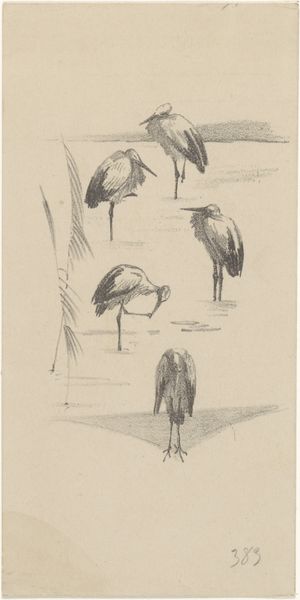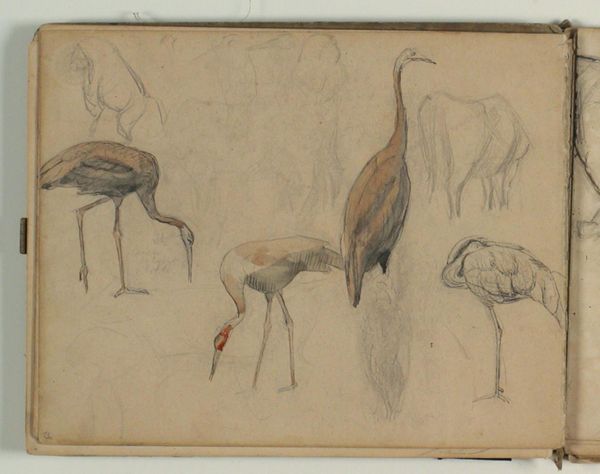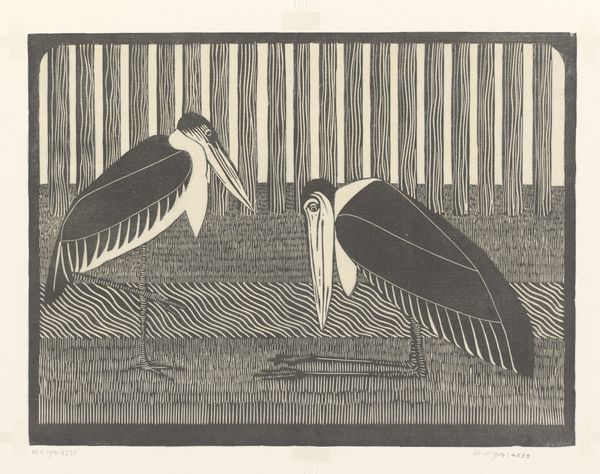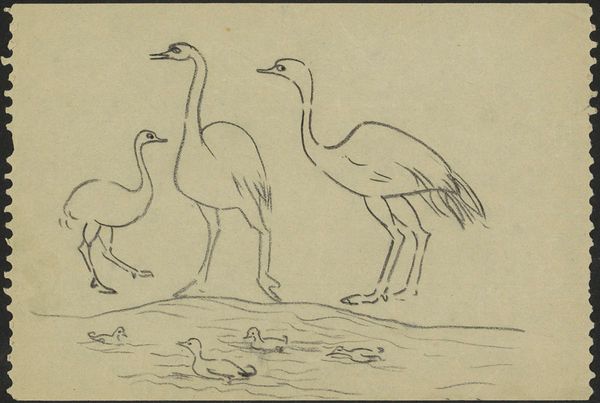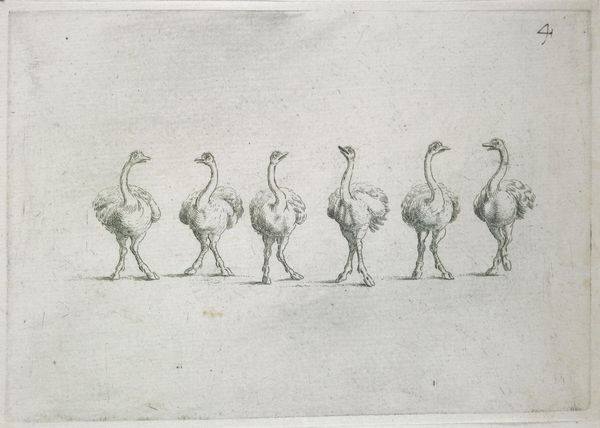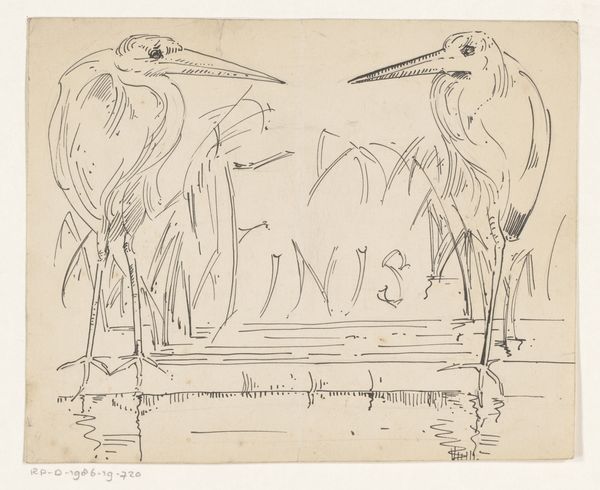
drawing, paper, pencil
#
drawing
#
landscape
#
paper
#
pencil
#
line
#
realism
Dimensions: height 80 mm, width 120 mm
Copyright: Rijks Museum: Open Domain
Curator: It’s interesting to see Theo van Hoytema, better known for his Art Nouveau posters, working in pencil on paper. This drawing, created around 1890, is titled "Wenskaart met twee kraanvogels," which translates to "Greeting Card with Two Cranes." Editor: There's something very stark and immediate about it. The limited palette and the precision of the lines give it a quiet, almost melancholic feel, despite the inherent grace of the birds themselves. Curator: Beyond their formal grace, cranes often symbolize longevity and marital fidelity in various East Asian cultures. Considering Hoytema’s political engagements, the choice of cranes might signal something deeper than just their aesthetic appeal. It seems likely that the artist appreciated these values, perhaps reflecting a personal sentiment he intended to convey through the work, in terms of hope or endurance within difficult contexts. Editor: It's the composition that draws me in. Notice how the cranes' bodies mirror each other, yet their heads are subtly turned in opposite directions. The eye is guided across the page through these small, deliberate shifts in weight and directionality, echoed by their barely perceptible reflection. It's remarkably economical, using just line and tonal contrast. Curator: The subtle treatment of the background enhances that economical effect. The flat horizon emphasizes the immediate foreground, pushing these figures into a space of solitary observation, as these wading birds, rendered with such attention to realistic detail, take part in a timeless quest for self-sustenance. Editor: It's a beautiful synthesis of the natural and the constructed, and I’d argue it demonstrates an adept rendering of perspective and the effective use of empty space to add depth. This creates visual tension, and draws our focus back to the cranes, who hold our gaze. Curator: Right. The artist draws upon visual realism to convey a profound sense of historical presence, in conjunction with themes of cultural exchange between Western and Eastern European traditions. What strikes me now is that this delicate drawing, with its emphasis on the strength and beauty in pairs, transcends time and culture, reminding us of nature's persistent presence, no matter the era. Editor: Indeed, focusing on the formal construction, that minimalist aesthetic speaks to something timeless in the visual language of art, despite historical shifts and cultural reinterpretation.
Comments
No comments
Be the first to comment and join the conversation on the ultimate creative platform.
